Continuing with the chick-magnet cat photos as introductions to flying killing machines, I give you one of the reasons people believe in demons . . .

. . . really, nothing to be afraid of . . . just a black kitty-cat.
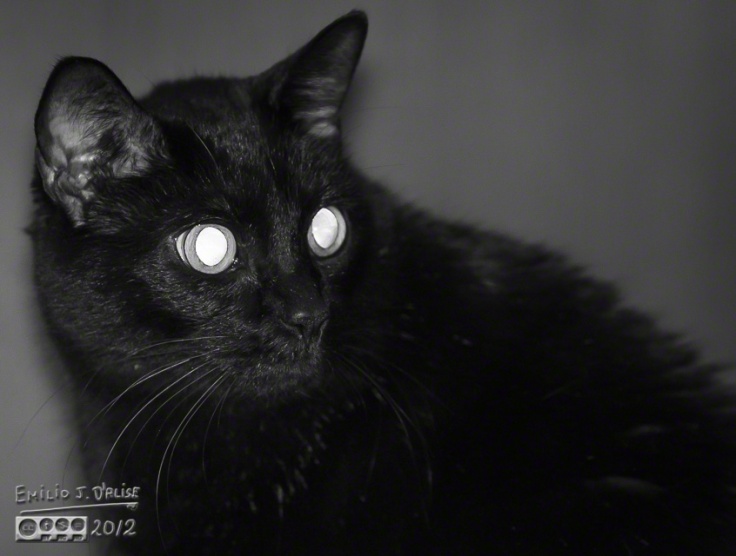
Ignorant people the world over still believe in luck, magic, demons, ghosts, evil spirits, and yes, even hold strong religious beliefs. Often these beliefs manifest themselves by people killing, torturing, or otherwise harming both people who believe differently, and animals they believe personify their ignorant fears.
Black cats are still regarded as harbingers of bad luck, and people (who should themselves be put down) have no qualms about harming them.
But enough rants about my distaste for the majority of humans. Let’s concentrate, instead, on how said humans devise wonderful machines to efficiently kill other humans.
Note: I just found out that all the links in the Smithsonian catalog changed. That means that links referencing the museum’s database will return a dead link error (error 404). I’m not going back through the posts to update the links. One, because it’s a lot of work, and two, because no one mentioned it. If you’re looking for the Smithsonian’s entry for a plane, just search under the name.
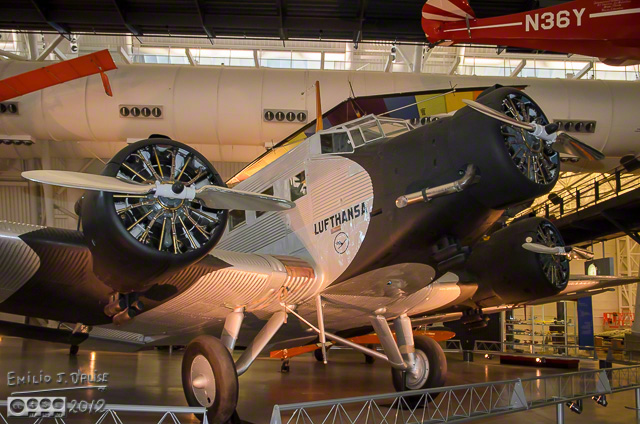
The Junkers Ju 52 was primarily an European airliner (one of the most successful European airliners ever made), but also served briefly as a bomber. It’s main job was to carry people around. Sometimes it carried people to places where they could kill other people, or be killed themselves.
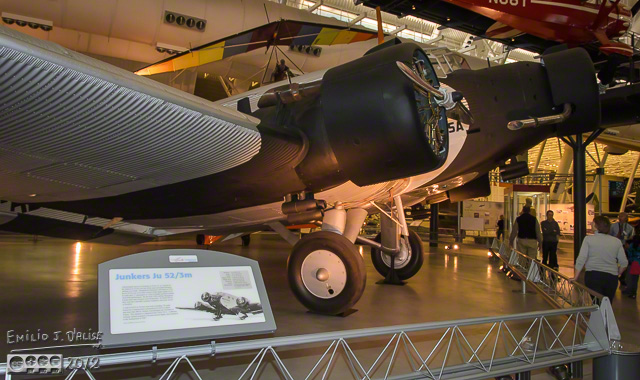
It’s not a bad-looking plane, and the B&W color configuration has always been one of my favorite (think Juventus).
This next plane does not have a military history that I could find. It was a Depression-era-designed glider kit sold for $385, or $750 ready-to-fly (1938 price). It is a Bowlus BA-100 Baby Albatross.
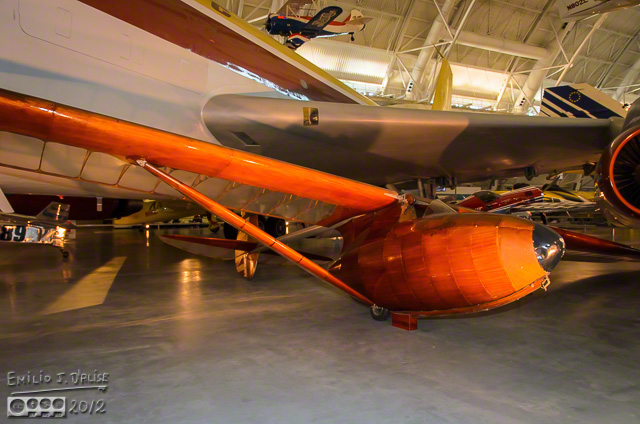
A glider . . . 156 kits were produced, and as of a month ago, 12 were still around. Not bad for being 75 years old.

Since the last plane probably was not responsible for killing anyone but some of their pilots, I give you a legendary deliverer of death.
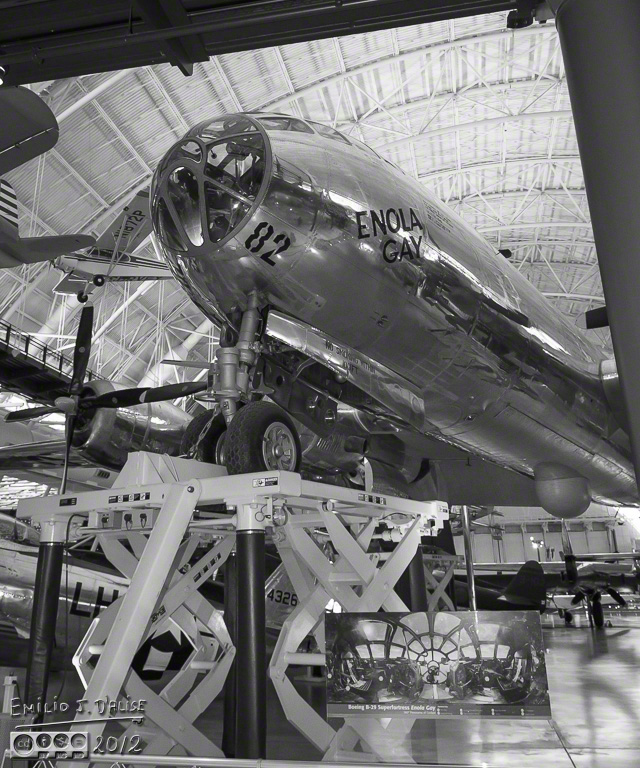
I was glad to see this plane here, and all in one piece. Last I had seen her, she was in pieces, part of a politically-correct display at the Air & Space Museum at the National Mall.
I would link to the National Mall website, but because of our idiot politicians, the site is down due to the government shutdown. Lest someone assumes I blame one party or the other, I hold both in equal and extreme contempt.
But, back to the plane.

The Enola Gay carried Little Boy to the skies over Hiroshima, and set it free . . . ushering us into an era of unprecedented potential in human-caused destruction; The Atomic Age.
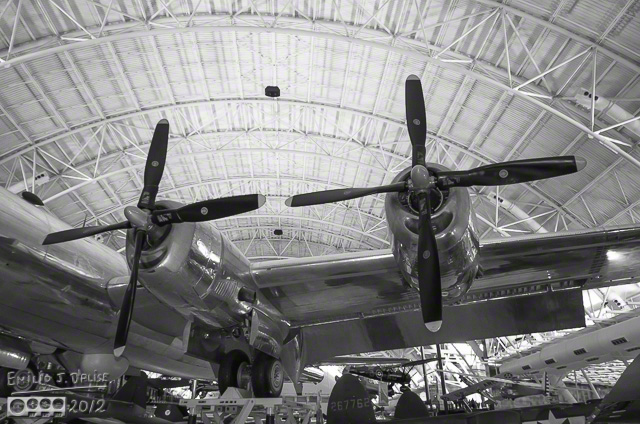
When I do the posts about the National Museum of the United States Air Force (Dayton, Ohio), I will have photos of Bockscar, the the B-29A-40BN that carried Fat Man to Nagasaki.
Lest anyone thinks I hold people at the time in contempt, that is not the case.
I think perhaps the second bomb was more of a test of capabilities than a necessity, but even then I can see the argument, somewhat weak argument, that a one-off detonation might be viewed by the Japanese as just that; a single use weapon.

To all those who now sit in judgment of our use of atomic weapons (and it’s easy to do), remember future generations will sit in judgment of what we have done, what we do, what we allow to be done, and judge us not based on our own frame of reference, but theirs.
My guess is they will curse us for allowing the corruption of an ideal, and letting our government take control of our (and their) lives in the name of security, the common good, and other misguided ideas.
Ah, crap . . . enough with the negativity. The world is what it is, and I’m too tired to keep bitching about it (besides, by now everyone knows how I feel). How about we just look at the planes for their beauty, deal? Deal!
Here’s a panorama of the Enola Gay. Impressive plane.
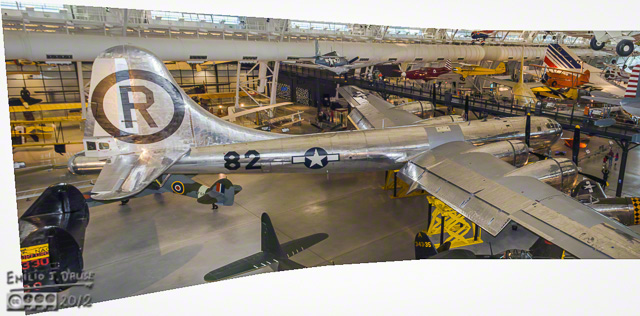
And here is the . . . .
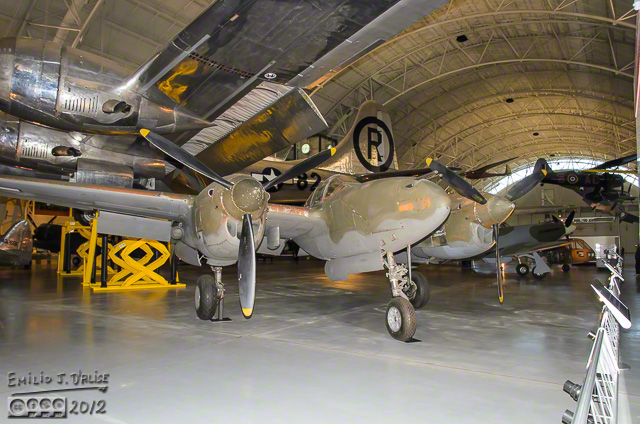
I don’t remember when I first saw these planes . . . probably a war movie, back at a time when I was watching inordinate numbers of hours of television to learn to speak English (I should have learned how to write, instead).
From personal experience, I can attest watching lots of television is an effective way to learn English, and eventually have to wear glasses (contact lenses now). Excluding stuttering from the equation (it’s bilingual), it took me about six months to be relatively fluent. Not that I spoke much.
The P-38 Lightning is my favorite of the WW II era planes, and possibly of all planes, save perhaps the SR-71. Maybe it’s a tie.

The Germans called it the “fox-tailed devil”, and the Japanese called it “two planes, one pilot”. It was the only American fighter aircraft in production from America’s initial involvement in World War II (Pearl Harbor), through to the end (VJ Day, Victory over Japan Day). Lightning pilots in the Pacific theater downed more Japanese aircraft than pilots flying any other Army Air Forces warplane.
Where I to come into a large sum of money, and have the notion I might own a plane, I would cast the idea from my head, but not before briefly considering getting a P-38 Lightning (list of surviving P-38 aircrafts).
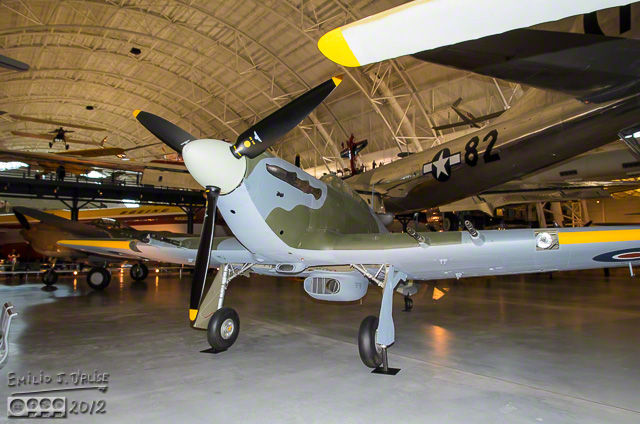
The Hawker Hurricane is overshadowed by the Spitfire, but it accounted for 60% of RAF victories in the Battle of Britain, although with higher loss-to-victory ratio than the Spitfire.
The thing looks dainty . . . not so this next plane.

Even the name is ominous. The P-61 Black Widow was designed for night interception of opposing aircraft, and the first aircraft specifically designed to use radar.
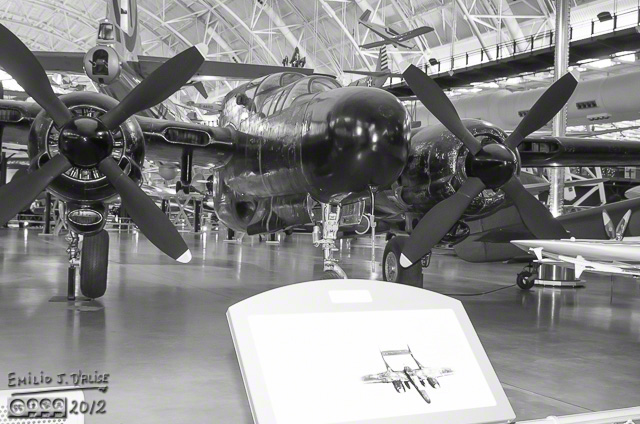
On the night of 14 August 1945, a P-61B of the 548th Night Fight Squadron named “Lady in the Dark” was unofficially credited with the last Allied air victory before VJ Day.
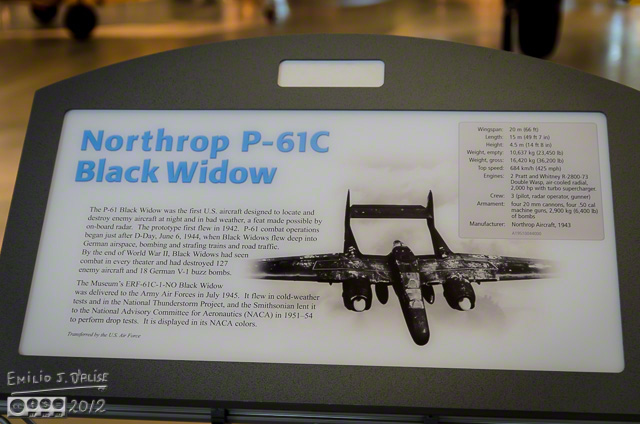
The P-61 was also modified to create the F-15 Reporter photo-reconnaissance aircraft for the United States Air Force. Probably carried one of the cameras shown in the previous post.
Next is another plane with no war-time or military record, although it laid the groundwork for far more expensive, and deadlier, versions.

The Northrop N-1M Flying Wing is small. Frankly, I did not see enough room even for a small pilot.
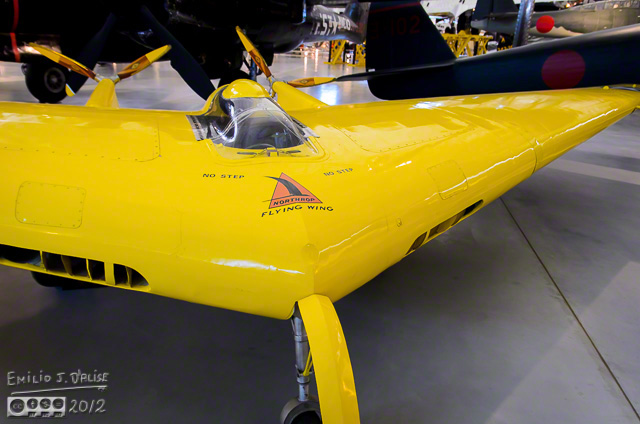
But flown it was, so I’m imagining the pilot’s legs hanging below the fuselage, running along the ground to provide additional propulsion as the wing attempted to get off the ground.
This next plane was the first American all-metal production plane, the Boeing P-26 Peashooter, and the prototype first flew in 1932.

It still had an open cockpit, and fixed landing gear, and was the last such design produced for the USAAC as a fighter aircraft. It looks sturdy.
This next plane was more impressive. The Nakajima J1N-S Gekko “Irving”.

Sometimes the translations of Japanese names varies depending on the source, but as far as I can tell, the name Gekko means “Moonlight”.
Fitting for a plane that was a night fighter. Not so apt for it’s later, more desperate, missions . . . the kamikaze missions.

This is the only surviving Gekko, and that only after being the subject of what was at the time the largest and most complex restoration project the National Air and Space Museum had ever undertaken.

It took four years and three months, for a total of 17,000 hours of labor (amazing they hit 17,000 right on the nose, and not a minute either way).

It turned out quite well.
Another “only survivor” plane is this Dornier Do 335 Pfeil. The name “Pfeil” is an excellent example of onomatopoeia, for the translation from German means “arrow”. Many a times as a young brave, while playing cowboys and indians, I voiced “pfeil” as I let loose an imaginary arrow at imaginary friends playing imaginary foes.

Hard to see in the photo, but notice the rear propeller. This was a “push-pull” design. It might have had significant operational advantages (it’s speed was 426 mph, but with boost, it would top 474 mph), but only a few were delivered before the war ended. Had I known of its history, I would have snapped a few more photos. Something I will remedy on my next visit.
French ace Pierre Clostermann claimed the first Allied combat encounter with a Pfeil in April 1945. In his book The Big Show (pages 273-274) he describes leading a flight of four Hawker Tempests from No. 3 Squadron RAF over northern Germany, when he intercepted a lone Do 335 flying at maximum speed at treetop level. Detecting the British aircraft, the German pilot reversed course to evade. Despite the Tempest’s considerable low altitude speed, the RAF fighters were not able to catch up or even get into firing position.
This aircraft was captured by Allied forces at the plant on 22 April 1945. The aircraft was test flown from a grass runway at Oberwiesenfeld, near Munich, to Cherbourg, France while escorted by two P-51s. The Do 335 was easily able to out-distance the escorting Mustangs and arrived at Cherbourg 45 minutes before the P-51s.
Yet another “only survivor” and interesting aircraft was the Aichi M6A Seiran.

In December 1941 Commander-in-Chief of the Japanese Combined Fleet, Admiral Isoroku Yamamoto, proposed constructing a large fleet of submarine aircraft carriers (designated STo or sen-toku — special submarine) whose purpose was to mount aerial attacks against American coastal cities. The submarines would surface to launch their aircraft by catapult, submerge to avoid detection, then surface again to retrieve the aircrews who would ditch their planes nearby. By June 1942, the plan was to build a fleet of eighteen such subs. This was later cut to nine, then five and finally just three.
To equip the submarine aircraft carriers, the Imperial Japanese Navy Air Service requested that Aichi design a folding attack aircraft with a range of 1,500 km (810 nmi) and a speed of 555 km/h (300 kn). Aichi was already manufacturing under license, the D4Y1 Suisei (Judy), a relatively small single-engined carrier dive bomber with exceptionally clean lines and high performance. Detailed engineering studies commenced in an effort to modify the Susei for use aboard the I-400 submarines but the difficulties in doing so were eventually judged insurmountable and a completely new design was initiated.

As fitting a seaplane that would spend time underwater, it has a definite shark-like appearance. Side note . . . Seiran is translated as “Mountain Haze” in the Wiki, but the Smithsonian has it as “Clear Sky Storm”. Perhaps both are correct, but if a Japanese reader can confirm either or both, it would be much appreciated. Arigato, with a bar atop the “oh”.
Aichi’s final design, designated AM-24 by Aichi and given the military designation M6A1, was a two-seat, low-winged monoplane powered by a 1,050 kW (1,410 hp) Aichi AE1P Atsuta 30 engine.
The system became operational in March of 1945. On July 1945 a small flotilla consisting of two STo submarines each carrying three Seirans, and two AM-type submarines, left Japan for the American base at Ulithi Atoll where forces were massing in preparation for attacks to the Japanese Home Islands.
On 16 August, the flagship I-401 received a radio message from headquarters, informing them of Japan’s surrender and ordering them to return to Japan. All six Seirans on board the two submarines, having been disguised for the operation as American planes in violation of the laws of war, were catapulted into the sea with their wings and stabilizers folded (for the I-401) or pushed overboard (for the I-400, the other STo sub) to prevent capture.
The things you learn when you read.

The N1K-J was considered by both its pilots and opponents to be one of the finest land-based fighters flown by the Japanese during World War II. The N1K possessed a heavy armament and, unusual for a Japanese fighter, could absorb considerable battle damage.
The N1K-J evenly matched the F6F Hellcat and was a better match than the A6M Zero for such aircraft as the F4U Corsair and P-51 Mustang. Despite such capability, it was produced too late and in insufficient numbers to affect the outcome of the war.
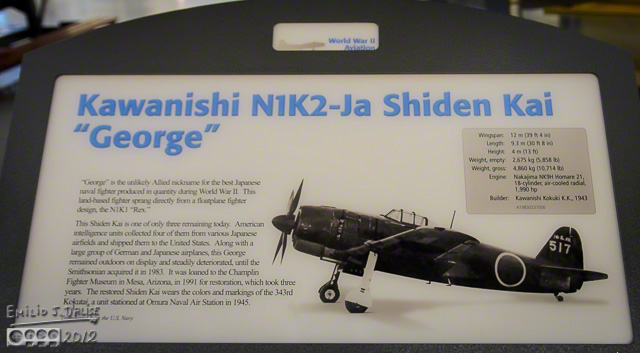
With a top speed of 369 mph, the N1K2 was about 20 mph faster than the A6M Zero. The heavier Shiden Kai also possessed surprisingly good maneuverability due to a mercury switch that automatically extended the flaps during turns.
These “combat” flaps created more lift, thereby allowing tighter turns. Moreover, its four 20 mm automatic cannon provided greatly increased firepower than earlier Japanese designs. Also unusual for a Japanese fighter, it could absorb considerable battle damage.

This is the Focke-Wulf Fw 190 Wurger (translated as “Shrike” or “Butcher Bird”). This is one of those planes that was used in a number of roles, and lots of information can be read about what they did . . . none of which I found overly interesting, except for this part from the Wiki entry:
Luftwaffe pilots who flew both the Fw 190 and the Bf 109 generally felt that, with the exception of high altitude capability, the Fw 190 was superior; Soviet aviators who flew against it did not share this view.
By the way, most of the text in this post is from Wikipedia, with some of the Smithsonian writing merged into it. Some is word-for-word, some I modified for brevity or effect. I figure most people are not going to click on the links.
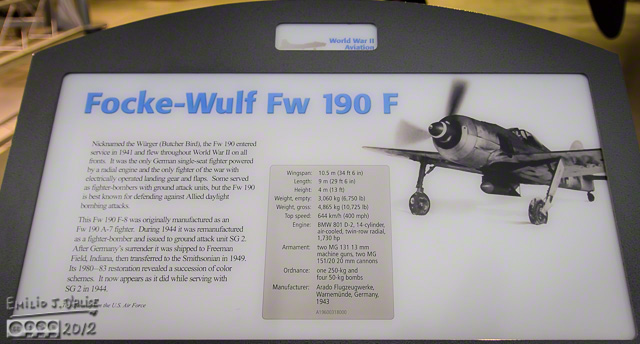
This was one of the planes I thought looked good in B&W . . .
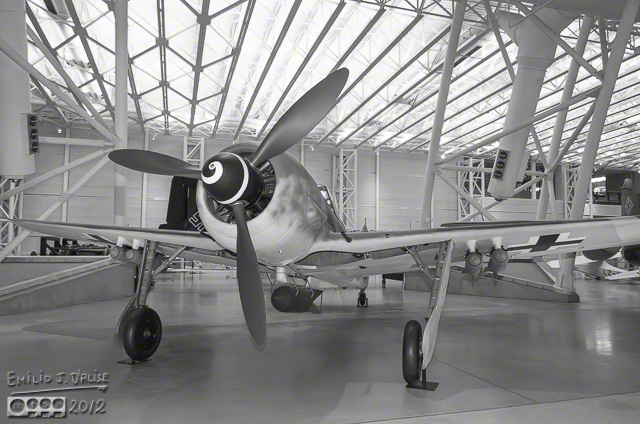
With the Enola Grey forming a backdrop, I present . . .
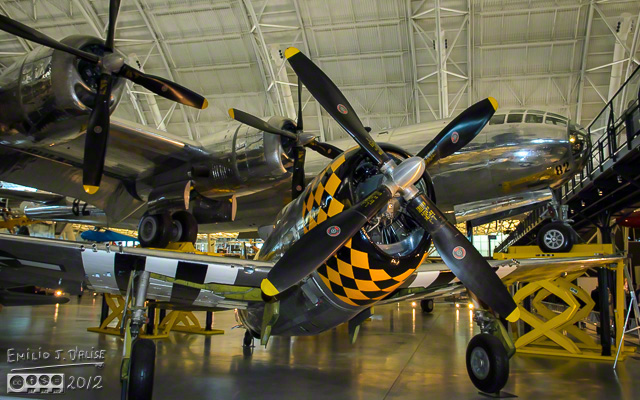
Hey, how about a different view of the Enola Grey?

Anyway, back to the Thunderbolt . . .

The Republic P-47 Thunderbolt was the largest, heaviest, and most expensive fighter aircraft in history to be powered by a single piston engine.
It was heavily armed with eight .50-caliber machine guns, four per wing. When fully loaded, the P-47 weighed up to eight tons, and in the fighter-bomber ground-attack roles could carry five-inch rockets or a significant bomb load of 2,500 pounds; over half the weight the B-17 bomber could carry on long-range missions (although the B-17 had a far greater range).
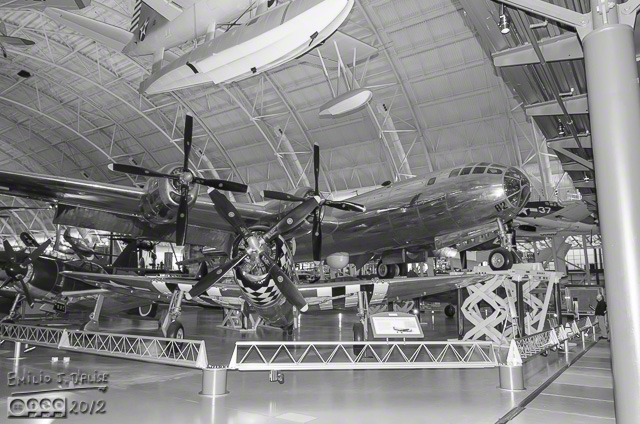
It was a feared ground-attack aircraft and, along with the Mustang and Lightning, considered by US commanders as one of the top three fighter planes of WW II.
The US built more P-47 than any other fighter plane.
The P-47 Thunderbolt was a design of Georgian immigrant Alexander Kartveli, and was to replace the Seversky P-35 that was developed earlier by Russian immigrant Alexander P. de Seversky (born in the same place as Kartveli: Tbilisi, Georgia). Both had left their homeland to escape the Bolsheviks. Damn Bolsheviks! . . . but good for us.
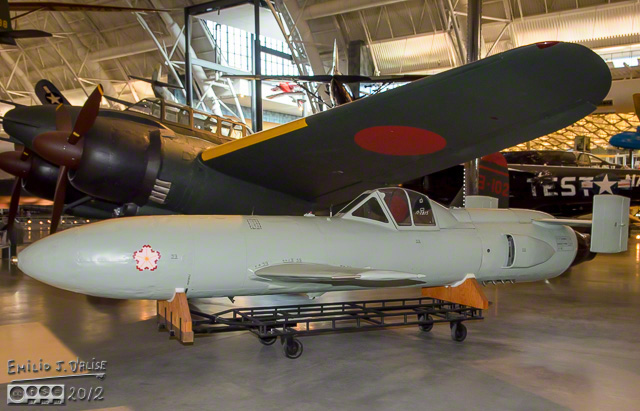
It is difficult for me to understand the mentality of someone deciding to pilot a bomb into a ship, but even more so to understand the depth of cynicism required by leaders who both encourage and applaud such actions.
We see the same situation with today’s suicide bombers . . . my question is this; if it’s so gorsh-darn honorable, why aren’t the leaders doing it?
The MXY7 Ohka Model 22 was the successor to the only operation Ohka (Cherry Blossom), the Model 11, and the machine shown above is the only surviving Model 22 thermojet-powered aircraft. There are several surviving rocket-powered Model 11 aircrafts.
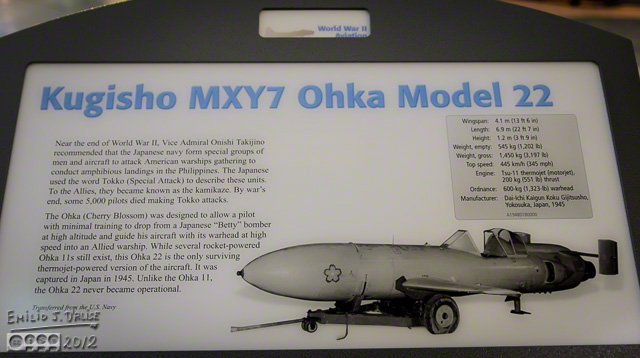
Speaking of rocket motors . . .

The Me 163 Komet was the only rocket-powered (motor shown in foreground) fighter aircraft ever to have been operational. It proved ineffective as a fighter, in part because of the small propeller on it’s nose.
I’m kidding . . . that turned a wind turbine used to generate power for the instruments (can’t get electrical power from a rocket). The main problem was the short flight duration and its high speed. Aside not being able to stay aloft very long, it flew too fast to give much time for the pilot to shoot at the much slower enemy aircrafts.
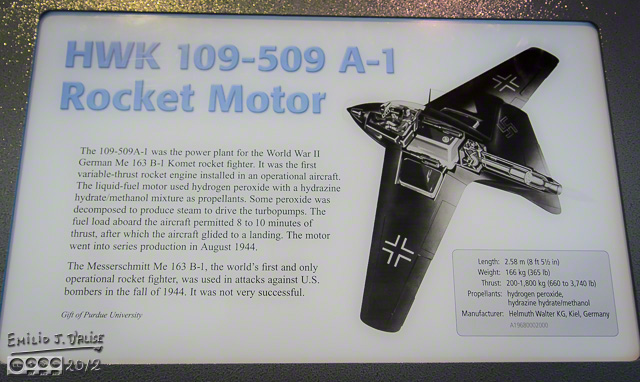
A number of innovative solutions were implemented to ensure kills by less experienced pilots. The most promising was a unique weapon called the Sondergerät 500 Jägerfaust.
This consisted of a series of single-shot, short-barreled 50 mm (2 inch) guns pointing upwards. Five were mounted in the wing roots on each side of the aircraft.
The trigger was tied to a photocell in the upper surface of the aircraft, and when the Komet flew under the bomber, the resulting change in brightness caused by the underside of the aircraft could cause the rounds to be fired.
As each shell shot upwards, the disposable gun barrel that fired it was ejected downwards, thus making the weapon recoilless.
It appears that this weapon was used in combat only once, resulting in the destruction of a Halifax bomber, although other sources say it was a Boeing B-17.
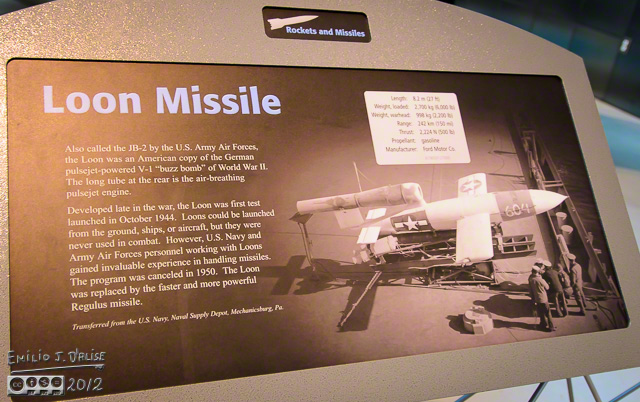
With everyone getting into the rocket game, the US came up with its own version of the German V-1 rocket; the Republic -Ford JB-2, also know as the Loon Missile.

It looks slightly more festive than photos I’ve seen of the V-1. Almost looks like a giant fireworks rocket.
Well, the hour grows late, and many things to do before I post, so let me wind up this post with a different view of the SR-71.

. . . how about this view?
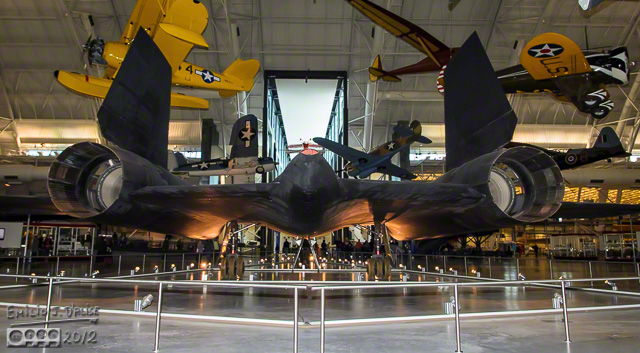
In fact, this might look a bit better in B&W.
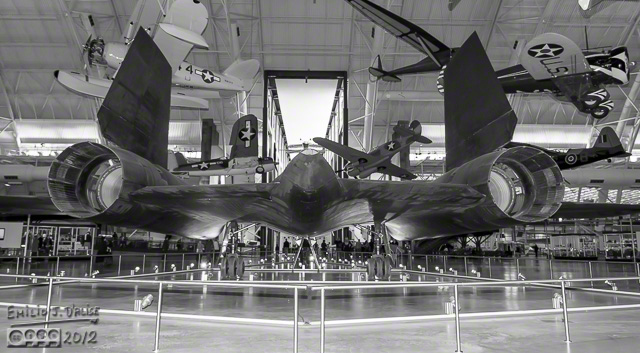
As usual, the full-size photos are in their own SmugMug Gallery (HERE). Most are probably not worth looking at full resolution (grainy due to the poor light), but the X3 size option is pretty decent.
The next post will have mostly vertical take-off stuff. People call them helicopters, but I call them flying bricks.
Note: as mentioned elsewhere in this post, many of the words used to describe the planes are either paraphrased or directly copied from the corresponding Wikipedia pages, and sometimes from the Smithsonian’s own descriptions. It’s worth noting Wikipedia is doing a fund drive. If you can spare a few bucks, please do so. They offer incalculable value for them who want to learn stuff.
~ ~ ~ ~ ~ ~ o o o o o o ~ ~ ~ ~ ~ ~
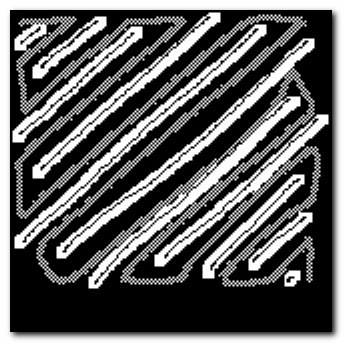
Astute persons might have noticed these doodles, and correctly surmised they hold some significance for me, and perhaps for humanity at large.
If you click on the doodle, and nothing happens, this is the link it’s supposed to go to: https://disperser.wordpress.com/2011/12/26/palm-vx-and-i/.
<><><><><><><><><><o><><><><><><><><><o><><><><><><><><><>
Note: if you are not reading this blog post at Disperser.Wordpress.com, know that it has been copied without permission, and likely is being used by someone with nefarious intention, like attracting you to a malware-infested website. Could be they also torture small mammals.
<><><><><><><><><><o><><><><><><><><><o><><><><><><><><><>
Please, if you are considering bestowing me some recognition beyond commenting below, refrain from doing so. I will decline nominations whereby one blogger bestows an award onto another blogger, or group of bloggers. I appreciate the intent behind it, but I would much prefer a comment thanking me for turning you away from a life of crime, religion, or making you a better person in some other way. That would actually mean something to me.
Should you still nominate me, I will strongly suspect you pulled my name at random, and that you are not, in fact, a reader of my blog. If you wish to know more, please read below.
About awards: Blogger Awards About “likes”: Of “Likes”, Subscriptions, and Stuff
Note: to those who may click on “like”, or rate the post; if you do not personally hear from me, know that I am sincerely appreciative, and I thank you for noticing what I do.
. . . my FP ward . . . chieken shit.
cool shit………. loved the rocket powered one that fired upwards………. wow!
LikeLike
Yeah. What got me about that was the use of photocells. I don’t tend to think of technology applications from back then.
LikeLike
Me either, the whole thing is surreal. If Hitler had put more of his time into technology and less into the occult that whole WW2 thing might have gone forever!
LikeLike
Magic and gods will let you down every time, without fail.
LikeLike
So will underpants with poor elastic
LikeLike
Who wears underpants?
LikeLike
Hadn’t realised you weren’t a native English speaker – you write like one, and very well too.
LikeLike
I am good at faking being good . . . also, most of them words above are from other sources.
LikeLike
Well done, E. The photos are great (as always) and the narrative very interesting. At one point I forgot that this is your post, so that must mean that you’re as good as them other professionals.
LikeLike
That could be taken a few ways, especially considering I’m using other sources.
. . . but thanks (I think).
LikeLike
There is something very addictive about looking at aircraft and at pictures of them. A treat.
LikeLike
More coming . . .
LikeLike
Love the first sentences about devils and killers machines, hahahaha, even if it is serious matters. Then too much about these killer machines, so I didn’t really get the rest. Waiting for the next chapter.
LikeLike
Yeah, I was on a roll . . . stopped it about a quarter of the way down. Hope you at least enjoyed the photos.
LikeLike